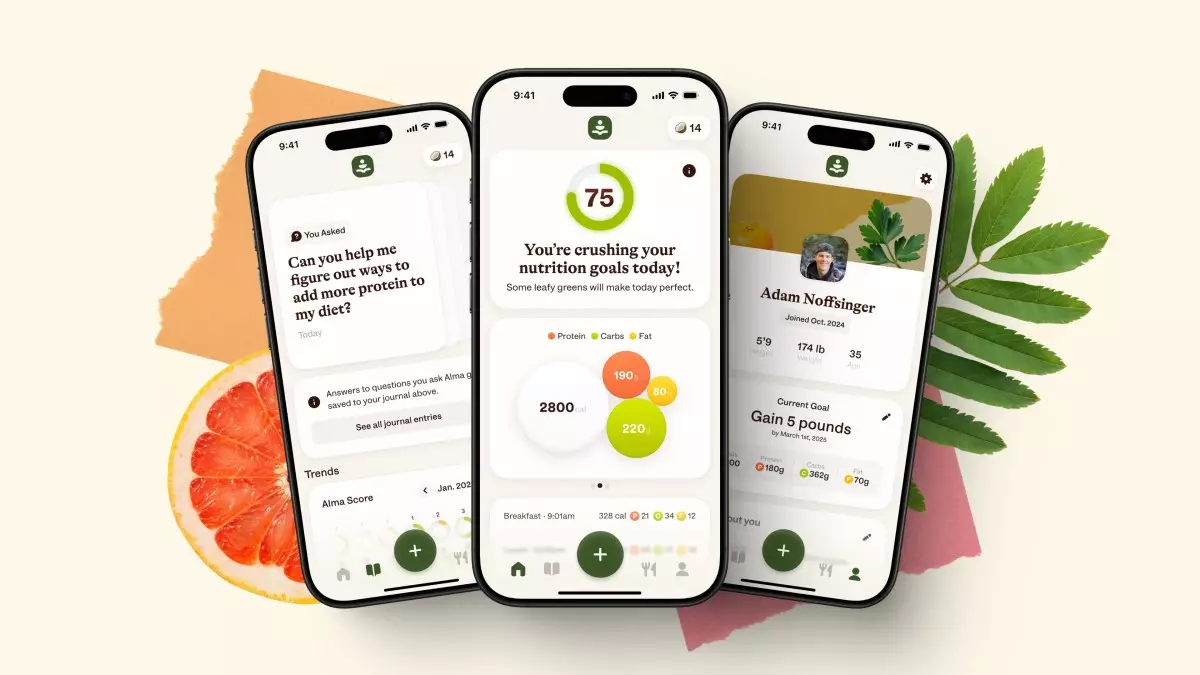In the contemporary landscape of health and wellness applications, generative AI has opened up remarkable possibilities that previously seemed elusive. With this technology, app developers are now capable of creating tools that provide valuable services, akin to those delivered by professionals like nutritionists and fitness trainers, but at significantly reduced costs. One of the latest entrants in this sphere is an iOS application called Alma, founded by former Whoop product executive Rami Alhamad. Alma targets the often tedious and labor-intensive process of nutrition tracking, a challenge that many users have faced with traditional apps.
Alhamad’s initiative comes on the heels of a growing demand for more intuitive and user-friendly applications in the nutrition sector. Unlike conventional apps, which require users to manually log their meals—often requiring laborious searches for specific foods—Alma allows users to input their meals with simple dialogue or by using photographs. This fundamental difference transforms meal logging from a cumbersome task into a seamless experience, reflecting a significant advancement in user interface design and usability.
At its core, Alma succeeds by incorporating an AI assistant that facilitates interaction on a more personal level. Users can dictate or type their food intake, and the app estimates portion sizes and caloric content almost instantaneously. This contrast to older models, such as MyFitnessPal, which can be daunting with their laborious entry processes, reinforces Alma’s mission: to reduce friction between the user and their health tracking.
Another unique selling point of Alma is its scoring system, which evaluates daily food choices based on caloric intake and macronutrient distribution. By providing feedback and improvement tips based on users’ choices, the app not only tracks but actively encourages healthier eating habits. Moreover, as users interact more with the AI, the assistant learns their preferences, creating a tailored experience that evolves over time—something not typically available through traditional tracking methods.
Alhamad’s journey into health and nutrition began in earnest after his tenure at Whoop. With a rich background in sports technology, he recognizes a substantial gap in practical nutrition solutions amidst the myriad of fitness tracking applications. Having struggled himself with fluctuating weight and the labor of food logging, he sought to create something that integrates the ease of conversational technology into dietary management.
The financial model for Alma, which features a subscription-based service at $19 per month or $199 annually, aims to build a stable revenue stream while providing users with significant value. This subscription structure also enables continuous development and enhancement of the application—such as expanding its database by collaborating with nutritional experts and integrating global health knowledge.
Although the market has several competitors—including notable apps like Healthify and Snapcalorie—Alma hopes to distinguish itself through superior design and user experience. By recognizing that many users are not currently consulting nutritionists, Alhamad posits that Alma can serve as a viable alternative to professional advice, reducing the reliance on expensive services.
The versatility of Alma is also highlighted through its recommendation features, where the AI can suggest meals based on uploaded photos or dietary goals such as specific intake of fiber or protein. This function not only makes meal suggestions practical but can also engage users in a more meaningful dialogue about their eating habits and preferences.
The Future of Nutrition Apps: Beyond Basic Tracking
Going forward, the aspirations for Alma extend beyond just tracking calories. Alhamad envisions a more dynamic application that can help users discover new recipes and facilitate cooking based on pantry inventory. This would require integrating more advanced AI capabilities that address the friction users often experience when interacting with less intuitive systems.
In an age where many individuals are turning to shortcuts for health solutions—such as expensive diet plans or drastic medical interventions—Alma offers a unique and realistic approach that can help users achieve their nutritional goals through a drug-free pathway. With the backing of investors, strategic partnerships, and a focus on personalizing the user experience, Alma is set to become a cornerstone in the evolving landscape of health apps.
As technology continues to evolve, it is clear that the potential for innovation in nutrition management is immense. With continued investment in AI and design, applications like Alma could redefine how individuals approach their health and well-being, making nutrition a more accessible and engaging part of everyday life.

